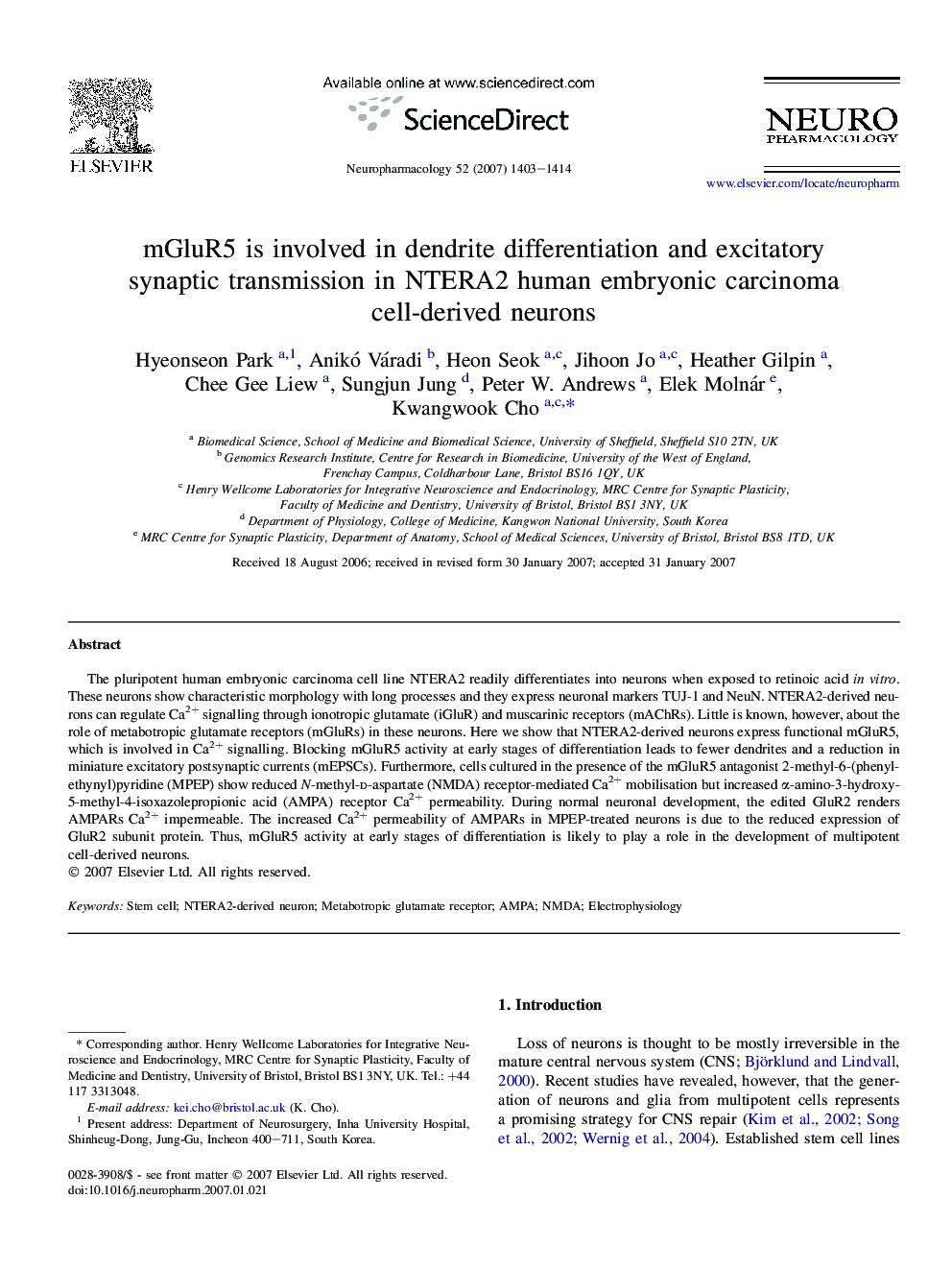| Article ID | Journal | Published Year | Pages | File Type |
|---|---|---|---|---|
| 2494886 | Neuropharmacology | 2007 | 12 Pages |
The pluripotent human embryonic carcinoma cell line NTERA2 readily differentiates into neurons when exposed to retinoic acid in vitro. These neurons show characteristic morphology with long processes and they express neuronal markers TUJ-1 and NeuN. NTERA2-derived neurons can regulate Ca2+ signalling through ionotropic glutamate (iGluR) and muscarinic receptors (mAChRs). Little is known, however, about the role of metabotropic glutamate receptors (mGluRs) in these neurons. Here we show that NTERA2-derived neurons express functional mGluR5, which is involved in Ca2+ signalling. Blocking mGluR5 activity at early stages of differentiation leads to fewer dendrites and a reduction in miniature excitatory postsynaptic currents (mEPSCs). Furthermore, cells cultured in the presence of the mGluR5 antagonist 2-methyl-6-(phenylethynyl)pyridine (MPEP) show reduced N-methyl-d-aspartate (NMDA) receptor-mediated Ca2+ mobilisation but increased α-amino-3-hydroxy-5-methyl-4-isoxazolepropionic acid (AMPA) receptor Ca2+ permeability. During normal neuronal development, the edited GluR2 renders AMPARs Ca2+ impermeable. The increased Ca2+ permeability of AMPARs in MPEP-treated neurons is due to the reduced expression of GluR2 subunit protein. Thus, mGluR5 activity at early stages of differentiation is likely to play a role in the development of multipotent cell-derived neurons.
